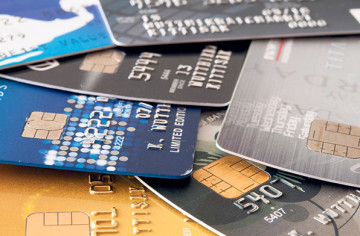 As technology advances, fraudsters may move to more low-tech methods in the future, says GlobalData
As technology advances, fraudsters may move to more low-tech methods in the future, says GlobalData
GlobalData’s 2018 Consumer Payments Survey warns that no matter how complex a security system becomes, methods for hacking it will always find a way to catch up, but most payment companies today, whether it is banks, scheme providers or e-commerce players, are investing heavily in methods to make their users’ accounts and transactions safer.
“However, there is only so much safety that a complex password can offer. The fight against fraud in the future will be fought with machine learning, artificial intelligence (AI), blockchain and biometric login ,”according to GlobalData.
GlobalData’s 2018 Consumer Payments Survey highlights just how diverse and spread out the methods of defrauding accounts are. The most prevalent is internet fraud, with 23 percent of respondents falling victim.
GlobalData Payments Analyst Vlad Totia said: “Almost 17 percent of respondents did not know how their account had been compromised, showing that avenues to gain access to somebody’s bank account are much broader and more diverse than just stealing a credit card. Some more ‘old-school’ techniques are less popular among fraudsters but are still used successfully. For example, eight per cent of respondents’ accounts were compromised through a confidence trick such as phishing.”
Totia said: “Fraudsters are quite inventive when it comes to breaching security methods. There are many ways to gain access and they do not all involve hacking login information. Sometimes, data can be taken from potential victims through social engineering. Either way, each avenue for potential malicious access is a threat.
“Companies such as Visa, Mastercard, Square, and Ingenico are all experimenting with biometric login via selfies. Fingerprint login is already widespread and has seen success in preventing malicious logins, while another step towards personal identification security is facial recognition payment; however, only a few companies including Alipay and CaixaBank are involved in experimenting with the technology at the moment.”
PayPal and Amazon are using machine learning and AI to establish a predictive analysis method of identifying fraudulent transactions by learning the usual spending habits of customers. In this case, even if a bank account is compromised, suspicious transactions can be flagged, blocked or even reversed.
All of these security features are essential, however, most of today’s banks, payment providers and financial services companies are experimenting with the strong encryption provided by blockchain. For example, Visa offers a business-to-business (B2B) sensitive data transfer platform for large corporate clients called Visa B2B Connect, which is built on blockchain architecture.
Totia said: “The permanent arms race between hackers and security systems is a reality, but as biometric, machine learning, AI and blockchain-based security become more widespread, fraudsters will naturally move on to the point of least resistance. If they can’t trick the system, they could trick the people.
“Social engineering, phishing, or simply fooling somebody by handing out login information is often far more effective than hacking. The paradox of advanced defence mechanisms for payments systems could be that fraud ultimately becomes prevalent through low-tech methods,” Totia said.





